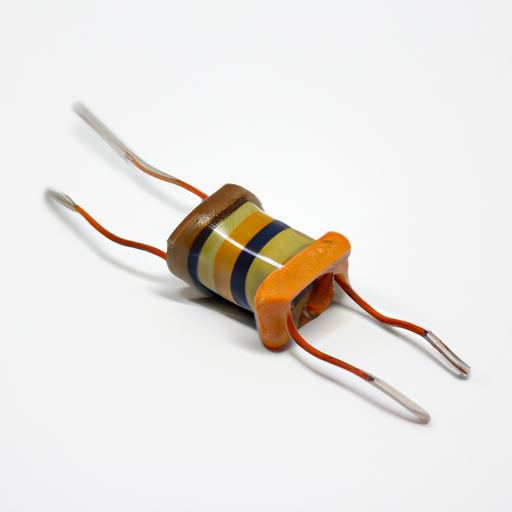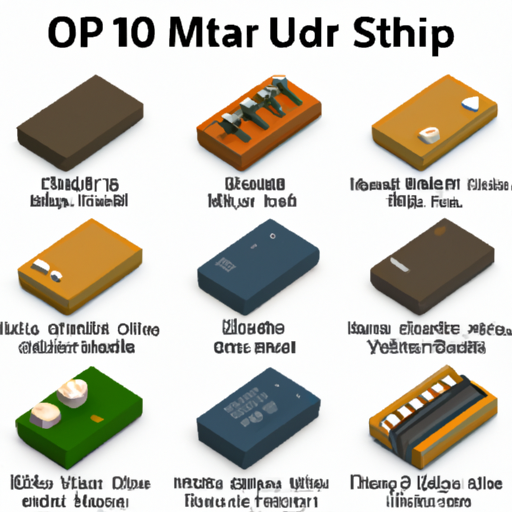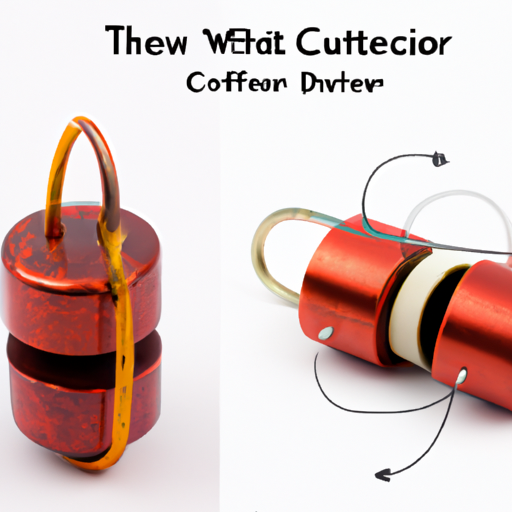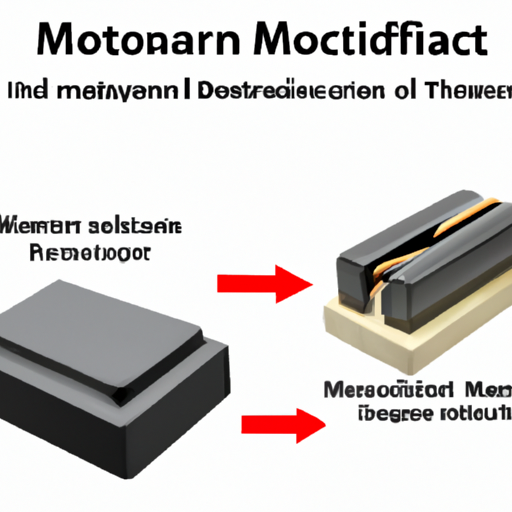An article will help you understand what a power inductor is
Understanding Power Inductors: A Comprehensive Guide
I. Introduction
In the realm of electronics, power inductors play a crucial role in the functionality and efficiency of various devices. But what exactly is a power inductor? Simply put, a power inductor is a passive electronic component that stores energy in a magnetic field when electrical current flows through it. This article aims to demystify power inductors, exploring their significance, construction, operation, and applications in modern electronics.
II. The Basics of Inductance
A. Explanation of Inductance
Inductance is a fundamental property of electrical circuits, defined as the ability of a conductor to store energy in a magnetic field. The unit of inductance is the Henry (H), named after the American scientist Joseph Henry. When current flows through a coil of wire, it generates a magnetic field around it. The strength of this magnetic field is directly proportional to the amount of current flowing through the wire.
B. The Relationship Between Current and Magnetic Fields
As current increases, the magnetic field strengthens, and conversely, when the current decreases, the magnetic field collapses. This dynamic relationship is what allows inductors to store energy and release it when needed, making them essential components in various electronic applications.
C. Types of Inductors
Inductors come in various forms, each suited for specific applications:
1. **Air-core inductors**: These inductors do not use a magnetic core, relying solely on the air surrounding the coil to create a magnetic field. They are typically used in high-frequency applications due to their low losses.
2. **Iron-core inductors**: These inductors use an iron core to enhance the magnetic field, allowing for higher inductance values in a smaller size. They are commonly used in power applications.
3. **Ferrite-core inductors**: Ferrite cores are made from a ceramic material that is magnetically conductive. These inductors are often used in high-frequency applications and are known for their efficiency and compact size.
III. What is a Power Inductor?
A. Definition and Characteristics
A power inductor is specifically designed to handle higher currents and voltages compared to standard inductors. They are characterized by their ability to store and release energy efficiently, making them ideal for power management applications.
B. Differences Between Power Inductors and Other Types of Inductors
While all inductors share the basic principle of energy storage, power inductors are built to withstand higher thermal and electrical stresses. They typically have lower DC resistance (DCR) and higher saturation current ratings, allowing them to operate effectively in demanding environments.
C. Common Applications of Power Inductors in Electronic Devices
Power inductors are widely used in various applications, including:
Switching power supplies: They help regulate voltage and current, ensuring stable power delivery.
DC-DC converters: Power inductors are essential in buck and boost converters, enabling efficient voltage conversion.
Energy storage systems: They play a vital role in storing energy for later use, particularly in renewable energy systems.
IV. Construction of Power Inductors
A. Materials Used in Power Inductors
The construction of power inductors involves careful selection of materials to optimize performance:
1. **Core materials**: Ferrite and iron are commonly used for their magnetic properties. Ferrite cores are preferred for high-frequency applications, while iron cores are used for low-frequency applications.
2. **Wire materials**: Copper is the most common wire material due to its excellent conductivity, although aluminum is also used in some applications for its lightweight properties.
B. Design Considerations
When designing power inductors, several factors must be considered:
1. **Size and shape**: The physical dimensions of the inductor can impact its performance and suitability for specific applications.
2. **Number of turns**: The number of wire turns in the coil affects the inductance value. More turns generally result in higher inductance.
3. **Inductance value and tolerance**: The desired inductance value must be specified, along with acceptable tolerances to ensure reliable performance.
V. How Power Inductors Work
A. The Principle of Energy Storage
Power inductors store energy in a magnetic field when current flows through them. This stored energy can be released back into the circuit when the current decreases, providing a stable power supply.
B. The Role of Power Inductors in Switching Power Supplies
In switching power supplies, power inductors are used to smooth out voltage fluctuations and maintain a steady output. They work in conjunction with capacitors and switches to convert and regulate voltage levels efficiently.
C. The Impact of Frequency on Inductor Performance
The performance of power inductors is influenced by the frequency of the electrical signals they handle. At higher frequencies, inductors may experience increased losses due to skin effect and core losses, necessitating careful selection of materials and designs.
VI. Key Parameters of Power Inductors
When selecting a power inductor, several key parameters must be considered:
A. Inductance Value
The inductance value, measured in Henries, determines how much energy the inductor can store. It is crucial to select an inductor with the appropriate inductance for the specific application.
B. Current Rating
The current rating indicates the maximum current the inductor can handle without overheating or saturating. Exceeding this rating can lead to reduced performance or failure.
C. DC Resistance (DCR)
DCR is the resistance of the inductor when a direct current flows through it. Lower DCR values are preferred as they result in reduced power losses and improved efficiency.
D. Saturation Current
Saturation current is the maximum current the inductor can handle before its inductance value begins to drop significantly. Selecting an inductor with an appropriate saturation current rating is essential for reliable operation.
E. Self-Resonant Frequency (SRF)
SRF is the frequency at which the inductor's reactance equals its resistance, causing it to behave like a resonant circuit. Understanding the SRF is important for ensuring the inductor operates effectively within the desired frequency range.
F. Temperature Coefficient
The temperature coefficient indicates how the inductance value changes with temperature. It is important to consider this parameter to ensure stable performance across varying operating conditions.
VII. Selecting the Right Power Inductor
A. Factors to Consider
When selecting a power inductor, several factors must be taken into account:
1. **Application requirements**: Understand the specific needs of the application, including voltage, current, and frequency requirements.
2. **Size constraints**: Consider the physical space available for the inductor, as size can impact performance and integration into the circuit.
3. **Cost considerations**: Balance performance requirements with budget constraints to select an inductor that meets both technical and financial needs.
B. Common Mistakes to Avoid When Selecting Power Inductors
Ignoring saturation current: Failing to consider saturation current can lead to inductor failure in high-current applications.
Overlooking DCR: Selecting an inductor with high DCR can result in excessive power losses and reduced efficiency.
Neglecting temperature effects: Not accounting for temperature variations can lead to unreliable performance.
VIII. Applications of Power Inductors
Power inductors find applications in a wide range of electronic devices, including:
A. Power Supplies
1. **Buck converters**: Power inductors are used to step down voltage efficiently, providing stable power to various components.
2. **Boost converters**: They help increase voltage levels, ensuring devices receive the necessary power.
B. Energy Storage Systems
Power inductors are essential in energy storage systems, allowing for efficient energy transfer and management.
C. RF Applications
In radio frequency (RF) applications, power inductors are used to filter signals and improve overall performance.
D. Automotive Electronics
Power inductors are increasingly used in automotive electronics, supporting functions such as power management and signal processing.
E. Consumer Electronics
From smartphones to laptops, power inductors are integral to the performance of consumer electronics, ensuring efficient power delivery.
IX. Challenges and Limitations
A. Issues Related to Saturation
Saturation can lead to reduced inductance and increased losses, making it crucial to select inductors with appropriate saturation ratings for specific applications.
B. Heat Dissipation and Thermal Management
Power inductors generate heat during operation, necessitating effective thermal management strategies to prevent overheating and ensure reliability.
C. Electromagnetic Interference (EMI) Concerns
Inductors can generate electromagnetic interference, which can affect the performance of nearby components. Proper shielding and layout design are essential to mitigate these issues.
X. Future Trends in Power Inductor Technology
A. Advances in Materials and Manufacturing Techniques
Ongoing research is focused on developing new materials and manufacturing techniques to enhance the performance and efficiency of power inductors.
B. The Impact of Miniaturization on Design
As electronic devices become smaller, the demand for compact power inductors is increasing. Innovations in design and materials are enabling the development of smaller, more efficient inductors.
C. Emerging Applications in Renewable Energy and Electric Vehicles
The growing emphasis on renewable energy and electric vehicles is driving demand for advanced power inductors that can efficiently manage energy storage and conversion.
XI. Conclusion
Power inductors are vital components in modern electronics, playing a crucial role in energy storage, voltage regulation, and signal processing. Understanding their construction, operation, and applications is essential for anyone involved in electronics design and engineering. As technology continues to evolve, power inductors will remain at the forefront of innovation, enabling the development of more efficient and compact electronic devices. For those interested in delving deeper into this fascinating topic, further exploration and study are encouraged.
XII. References
- Suggested readings and resources for further understanding of power inductors.
- Industry standards and guidelines related to power inductors.
This comprehensive guide provides a thorough understanding of power inductors, their significance, and their applications in the ever-evolving world of electronics.





